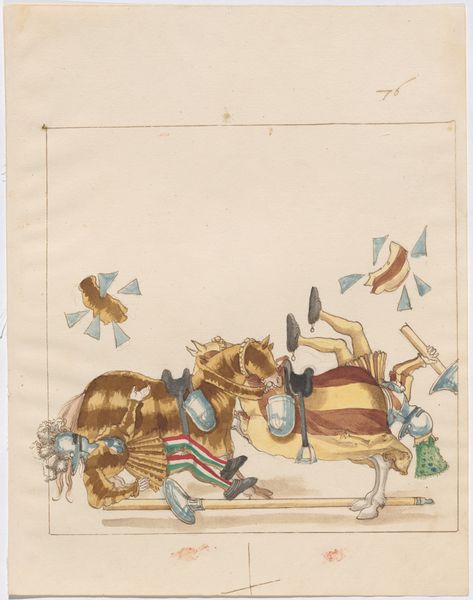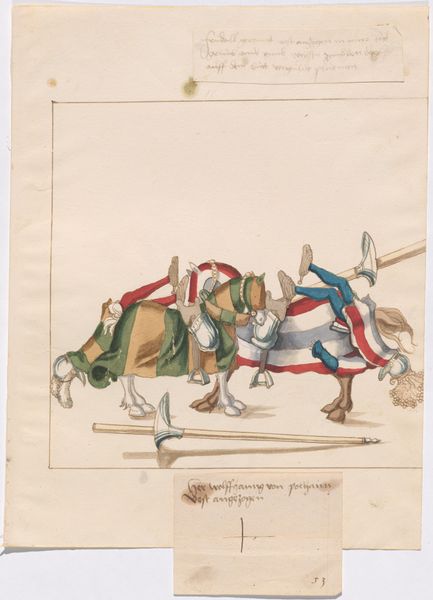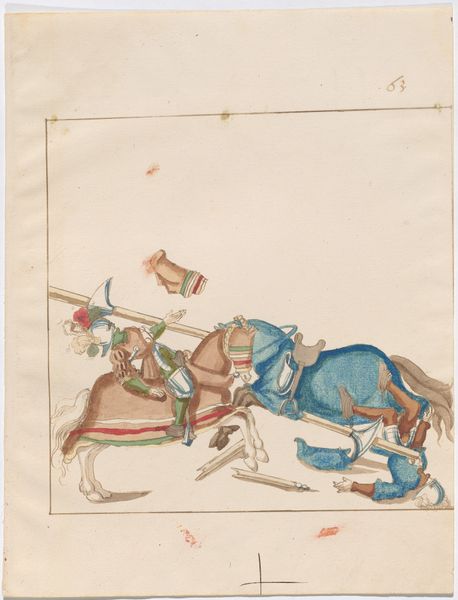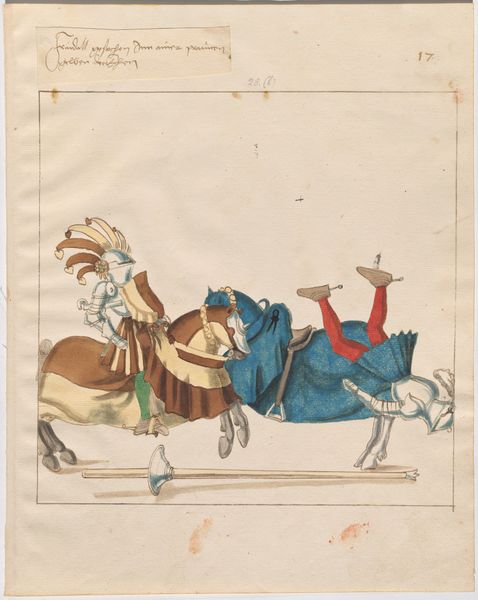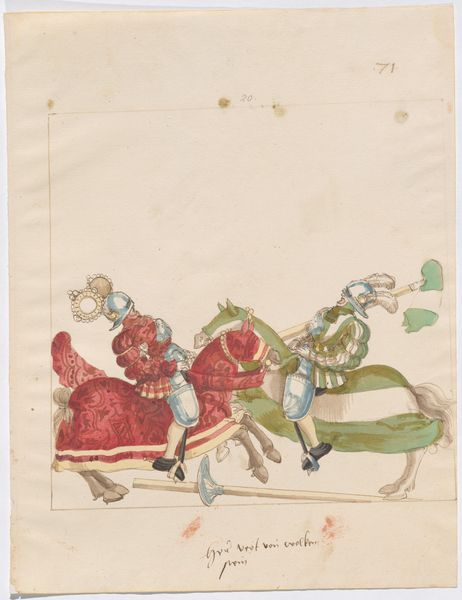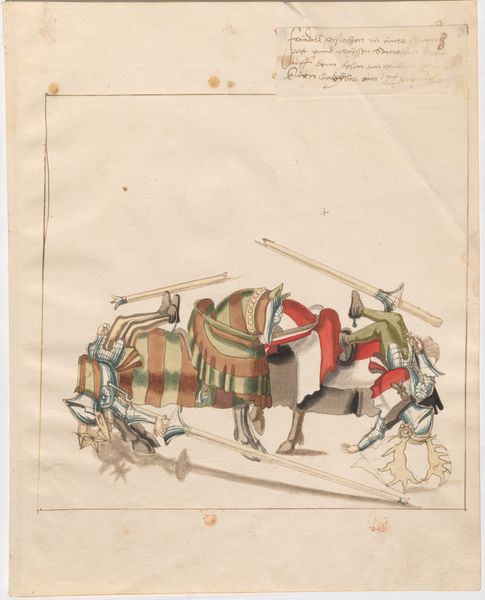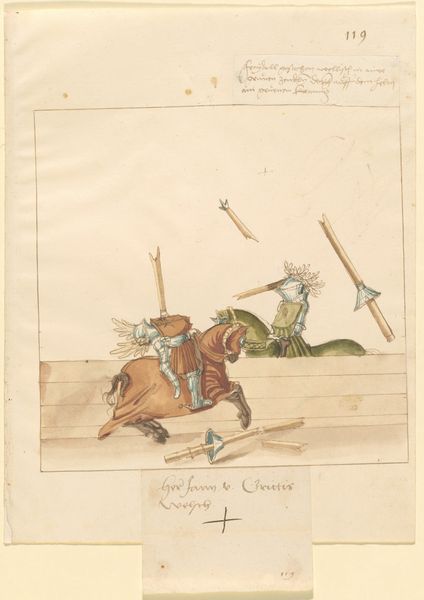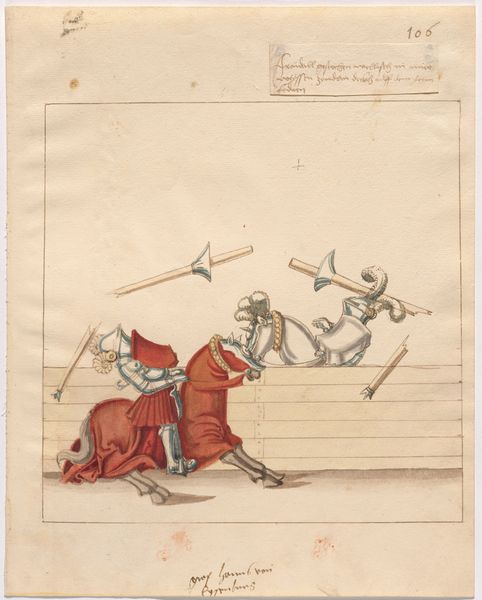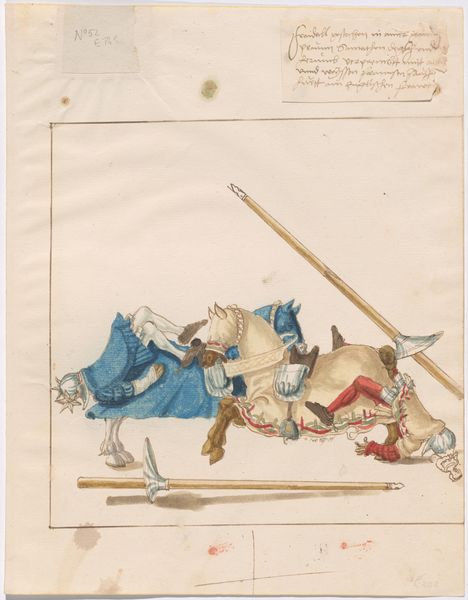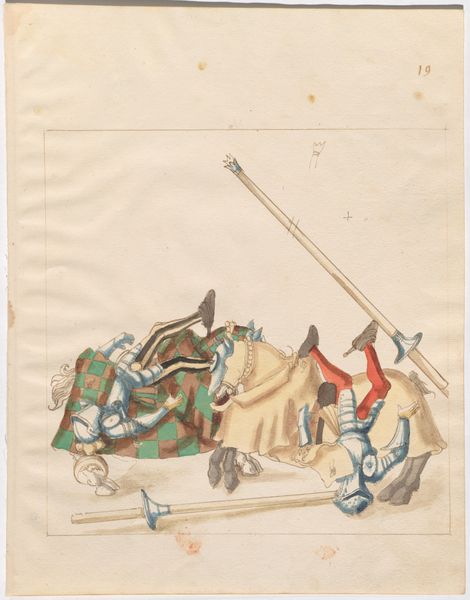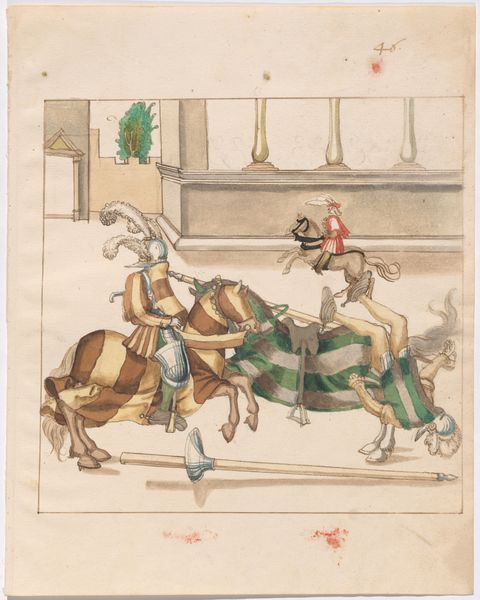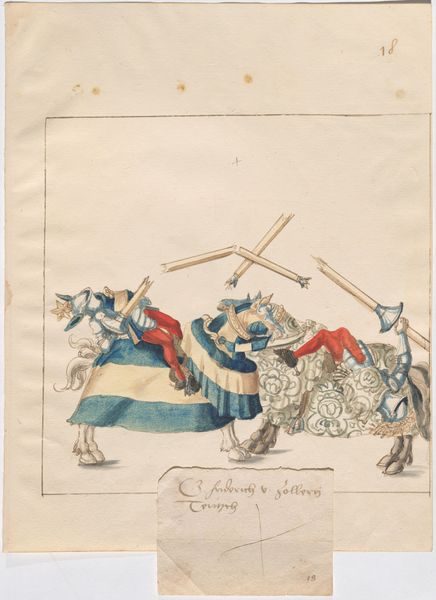
drawing, watercolor
#
drawing
#
11_renaissance
#
watercolor
#
watercolour illustration
#
history-painting
#
italian-renaissance
Dimensions: sheet: 33.6 × 26.3 cm (13 1/4 × 10 3/8 in.)
Copyright: National Gallery of Art: CC0 1.0
Editor: This watercolor drawing, "Italian Joust of Peace," dates from around 1512 to 1515. The jousters seem somewhat clumsy; what strikes you most about how it depicts this historical event? Curator: I am intrigued by the material reality presented here. Consider the production of courtly spectacles. We see the aftermath of an event deeply rooted in the political economy of the Renaissance. This joust, whether successful or failed, represents a considerable investment. Editor: Investment? I thought of it as mere entertainment. Curator: More than that, it signifies a complex expenditure of resources and labour. Think about the crafting of the armor, the breeding and training of the horses. These are all tangible elements pointing to considerable power and wealth. This artwork itself, executed in watercolor, also suggests a deliberate, costly documentation of that event. Do you think that the visible writing is an intrinsic part of the work, or just something supplementary? Editor: I see your point; it seems the details go beyond the image itself and contribute a different angle. The writing on the added sheet looks like it's maybe another form of documentation… Curator: Precisely! How the materials and means of depicting and recording this joust are as informative as the scene itself. It emphasizes how power and status are materially constructed and consumed. Editor: That's a fresh perspective. So, by analyzing the materials, we gain insights into the broader socio-economic context, going beyond just the visual spectacle? Curator: Absolutely. We shift the focus from purely aesthetic appreciation to understanding art as a product of material conditions and social practices. Editor: That helps me see that the social position isn't just visible in the picture itself but involves considering labor, wealth, and intention when approaching the piece. Curator: Indeed, analyzing the visible, tangible components can tell us new stories about the relationship between art, power, and consumption.
Comments
No comments
Be the first to comment and join the conversation on the ultimate creative platform.
